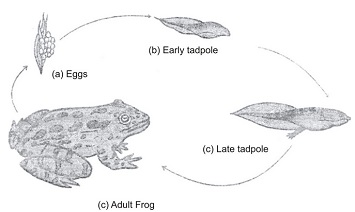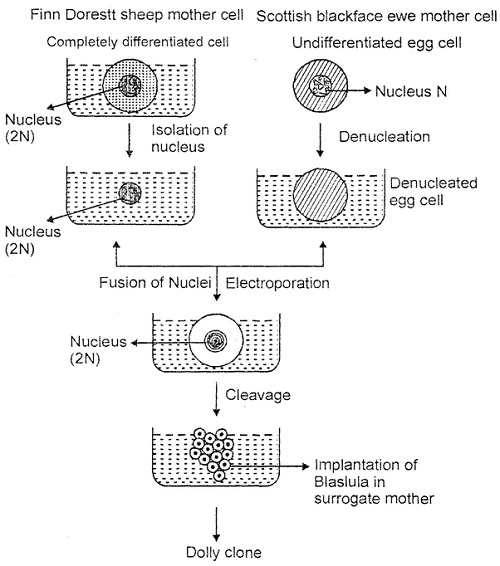
Formation Of Baby Inside The Womb
Reproduction in animal of Class 8
- By copulation sperms transferred to female vagina.
- Sperms fuse to ovum to form diploid zygote this is called as fertilization.
- Zygote starts mitotic division to form multicellular embryo by cleavage.
- After cleavage zygote forms a single layered hollow spherical stage called as blastula.
- Now from the surface of blastula organ specific areas migrate to their predetermined positions and form a three layered stage called as gastrula stage.
- Now three primary germ layers form specific organ systems. This is called as morphogenesis and differentiation.
FORMATION OF BABY INSIDE THE WOMB
PLACENTA:
It is a physiological barrier and an ultrafilter between the foetal blood and the maternal blood.
- Basic structure of baby is generally formed during the first three months of pregnancy. During that period developing baby is called as foetus. Pregnancy is mainly maintained by progesterone hormone so called as pregnancy hormone.
- Gestation period: The period from the fertilization to the birth of baby is called as gestation period. It is 280 days in human female.
PARTURITION:
It is the expelling of the fully formed young one from the mother's uterus after the gestation period.
- The developing foetus secretes hormones from its adrenal gland which stimulate the release of birth hormone from mother's pituitary and it causes a labour pain which pushes the baby out of uterus through vagina.
- After birth umbilical cord is tied and then cut which finally shrinks into a scar called navel.
AFTER BIRTH CARE:
- The newborn young one of human being is unable to take care of himself.
- He feeds on mother's milk for few days just after the birth and then on cow's milk.
- During this phase immune power becomes more in a baby.
- A baby should be taken to health centers regularly and vaccinated properly.
- The animals which give birth to young ones are called viviparous e.g., humans dog, cat etc.
- The animals which lay eggs are called oviparous e.g., Frog, Fish etc.
YOUNG ONES TO ADULTS:
The transformation of the larva into an adult through drastic changes is called metamorphosis.
Silkworm egg. → larva or caterpillar → pupa → adult
Frog egg → tadpole larva → adult.

TEST TUBE BABY OR IN VITRO FERTILISATION (IVF):
Test tube baby is the main achievement of biotechnology in human welfare. The most important human aspect of this technique is that the ladies deprived of children become capable of being pregnant. In this technique, the ovum is obtained from the body of the female and is fertilized by the sperm of the male, under controlled conditions. This whole process is completed outside the body of the female, in the laboratory. If the egg cell or ovum is correctly fertilized and the process of cleavage starts in the fertilized egg, then it is transplanted into the uterus of the female, where it undergoes normal development. Test tube baby is a baby obtained by normal development in uterus of the female but after in-vitro fertilization in the lab. The first test tube baby of the World, Louise Joy Brown was born on 25th July, 1978 in Britain. The first test tube baby of India "Harsha" was born in 1986.
STORY OF DOLLY:
Cloning is the production of an exact copy of a cell, any other living part, or a complete organism. Cloning of an animal was successfully performed for the first time by Ian Wilmut and his colleagues at the Roslin Institute in Edinburgh, Scotland. They successfully cloned a sheep named Dolly. Dolly was born on 5th July 1996 and was the first mammal to be cloned. Dolly was given birth by Scottish blackface ewe, it was found to be absolutely identical to the Finn Dorsett sheep from which the nucleus was taken. Since the nucleus from the egg of the Scottish blackface ewe was removed, Dolly did not show any character of the Scottish blackface ewe. Dolly was a healthy clone of the Finn Dorsett sheep and produced several offspring of her own through normal sexual means. Unfortunately, Dolly died on 14th February 2003 due to a certain lung disease.


- There are two modes by which animals reproduce. These are: (i) Sexual reproduction, and (ii) Asexual reproduction.
- Reproduction resulting from the fusion of male and female gametes is called sexual reproduction.
- The reproductive organs in the female include ovaries, oviducts and uterus.
- The reproductive organs in male include testes, sperm ducts and penis.
- The ovary produces female gametes called ova and the testes produce male gametes called sperms.
- The fusion of ovum and sperm is called fertilization. The fertilized egg is called a zygote.
- Fertilization that takes place inside the female body is called internal fertilization. This is observed in human beings and other animals such as hens, cows and dogs.
- Fertilization that takes place outside the female body is called external fertilization. This is observed in frogs, fish, starfish, etc.
- The zygote divides repeatedly to give rise to an embryo.
- The embryo gets embedded in the wall of the uterus for further development.
- The stage of the embryo in which all the body parts are identifiable is called foetus.
- Animals such as human beings, cows and dogs which give birth to young ones are called viviparous animals.
- Animals such as hen, frog, lizard and butterfly which lay eggs are called oviparous animals.
- The transformation of the larva into adult through drastic changes is called metamorphosis.
- The type of reproduction in which only a single parent is involved is called asexual reproduction.
- In hydra, new individuals develop from buds. This method of asexual reproduction is called budding.
- Amoeba reproduces by dividing itself into two. This type of asexual reproduction is called binary fission.
NCERT solutions for class 8 Science prepared by Physics Wallah will help you to solve your NCERT text book exercise.




